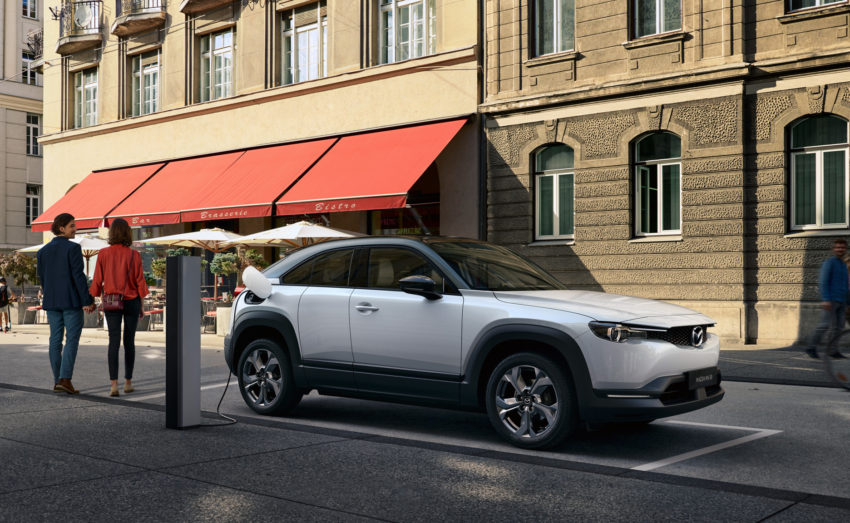Electric vehicle buyers want as much range as they can get, but Mazda apparently believes they’ll settle for less if the overall environmental impact is better for it.
That’s the argument the company is using to justify the relatively small battery on the upcoming first-ever Mazda EV, the MX-30.
[Estimated Reading Time: 1 min. 30 sec.]
The Mazda EV’s 35.5kWh battery pack is good for just under 125 miles of range on the European test cycle. It would be less than that on the EPA test cycle used in the U.S., possibly as low as 100 miles.

Mazda intentionally is using a “responsibly” sized” battery for the MX-30, Christian Schultze, director and deputy general manager of Mazda Europe’s research and development center, told Automotive News Europe in a recent interview.
Mazda bases that on a life-cycle comparison of CO2 emissions from the Mazda EV versus its diesel-powered Mazda 3 hatchback.
The life-cycle assessment looks at how much CO2 would be released in obtaining the minerals and metals needed to build the battery cells and assembling them into a pack, producing the electricity needed to charge the battery pack over a 100,000-mile lifetime, and replacing the pack at the end of 100,000 miles.
Per Mazda’s math, that would be the same as the life-cycle CO2 emissions from fueling a diesel Mazda 3.
Going with a bigger battery to give the MX-30 more range would make it a dirtier car, and Mazda seems to think that, in Europe at least, customers will trade the range for lower overall greenhouse gas emissions.
For the U.S. version – if Mazda does decide to bring the MX-30 here – there’s been talk of using a gasoline-powered generator as a range extender to provide more miles per charge. The BMW i3 REx does that and Nissan’s upscale Infiniti brand is talking range-extended EVs for its future.
